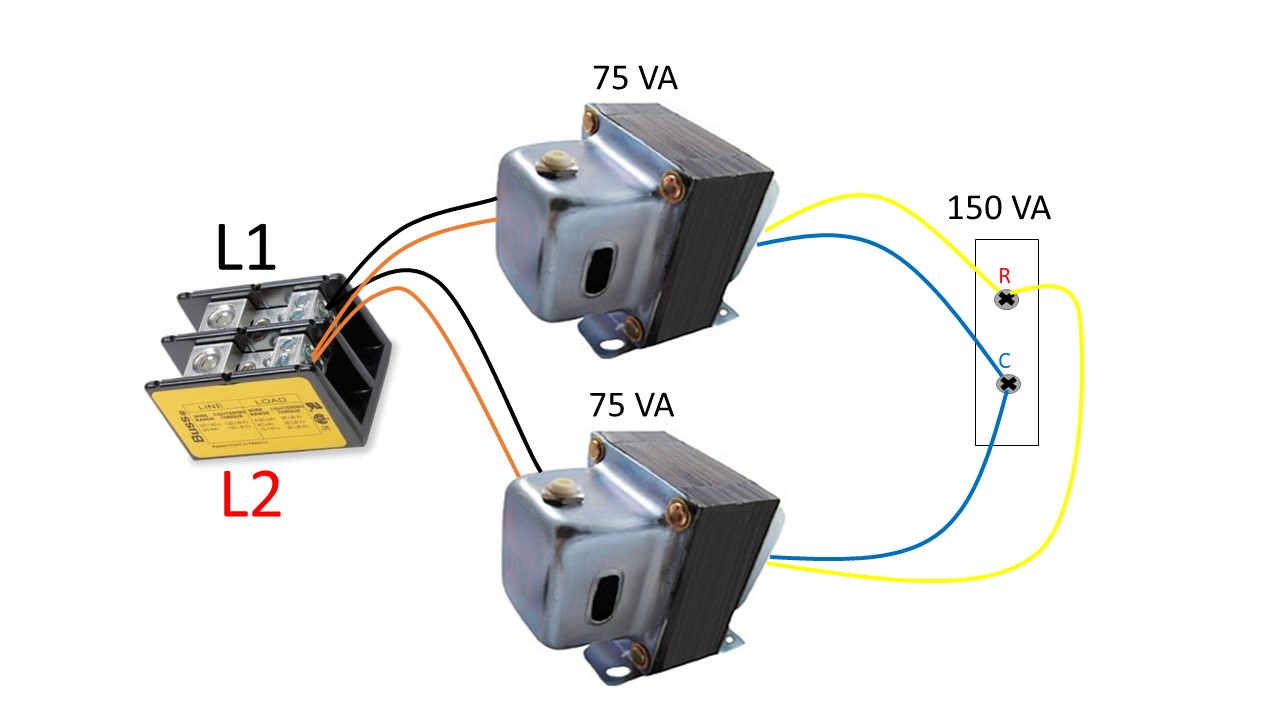Get Tech Tips
Subscribe to free tech tips.
Connecting Transformers in Parallel

I had an old-timer tell me that you can never connect two transformers together because they will “fight one another.”
If you are anything like me (and heaven help you if you are), a cartoon in your head starts playing whenever someone says something like that.
In this case, I imagine two transformers with boxing gloves on duking it out to see which one “wins.”
The truth is that you can connect two transformers so long as you are careful, but you need to know why you're doing it. Then, of course, you need to do it properly.
Transformers have a VA (volt-amps) rating that dictates how many volt-amps the transformer can handle on the secondary. (Volt-amps, mathematically represented as volts x amps, are watts simplistically, but there is a more complicated reason they are called VA in transformers. However, we won't get into that here.)
Above, we show two 75VA transformers with 24V secondary windings.
75VA ÷ 24V = 3.125A
So, with a 75VA transformer, you can run a maximum of 3.125 amps. If you need more power, you would need to either get a larger, more expensive transformer or connect another identical one in parallel. If you connected two 75VA transformers in parallel, you would then have 150VA of secondary capacity, which can be necessary in some cases with multistage commercial units or some large accessories.
In this case, parallel simply means connecting the two primary and secondary windings exactly as we show above.
Pretty easy.
It is SUPER important to get the polarity exactly the same and use two transformers with identical winding turns in the primary and secondary and identical secondary coil impedance (resistance).
In fact, it is so important that I advise that you only do this if you have two identical-model transformers.
To be even safer, connect the primary windings first and check the secondary's against one another with a voltmeter before actually connecting them to the system. For a typical 24v secondary, you can connect the two common wires to ground to act as a stable reference first, and then you can check the two R or hot side leads to one another and then to common. They should read 0v to one another and 24v to common. If you get anything other than 0v from hot to hot, you want to recheck your primary wiring and ensure they are exactly the same.
—Bryan











Comments
From the Facebook post –
Follow up question – So, with 3 phase power available if the 1st transformer’s primary was tabbed from say L1 & L2 and the additional transformer’s primary (same manufacturer’s part number) were to be tabbed from say L2 & L3. Would then still be possible to phase the two transformers?
From the Facebook post –
Follow up question – So, with 3 phase power available if the 1st transformer’s primary was tabbed from say L1 & L2 and the additional transformer’s primary (same manufacturer’s part number) were to be tabbed from say L2 & L3. Would then still be possible to phase the two transformers?
To leave a comment, you need to log in.
Log In